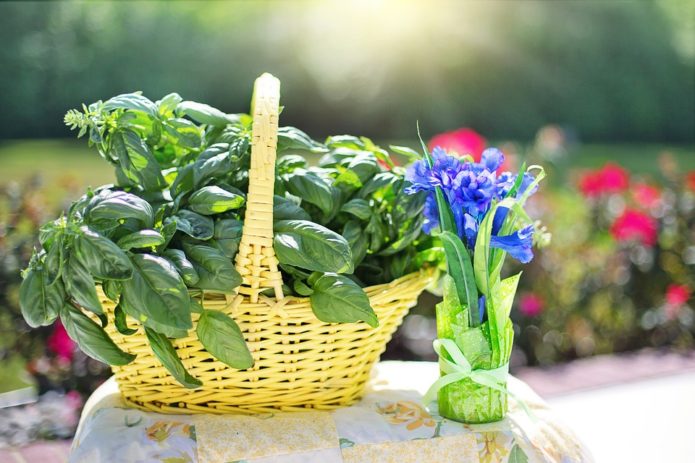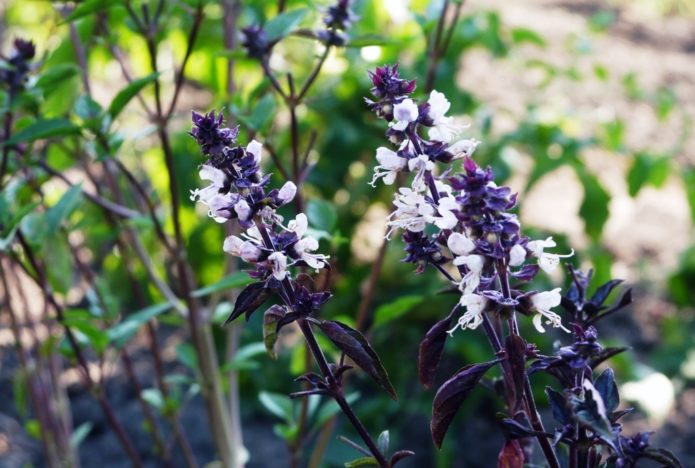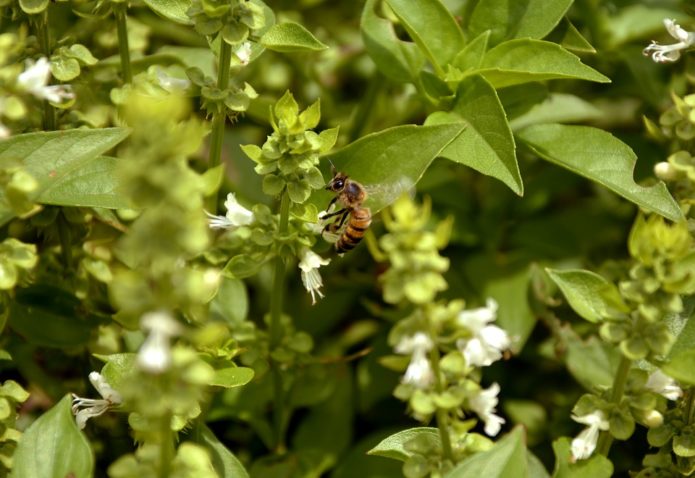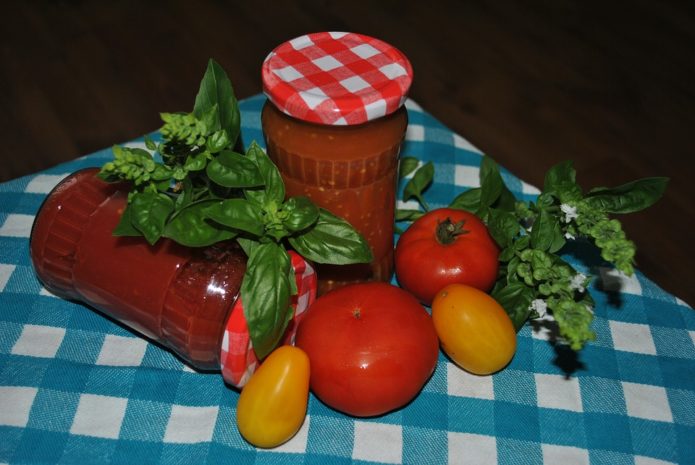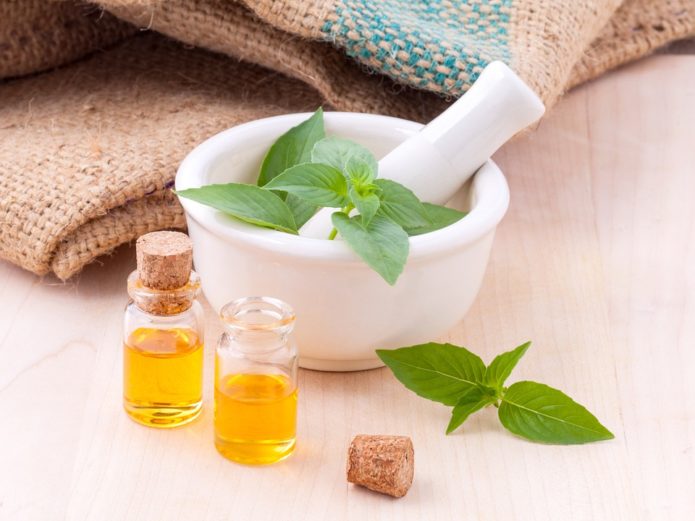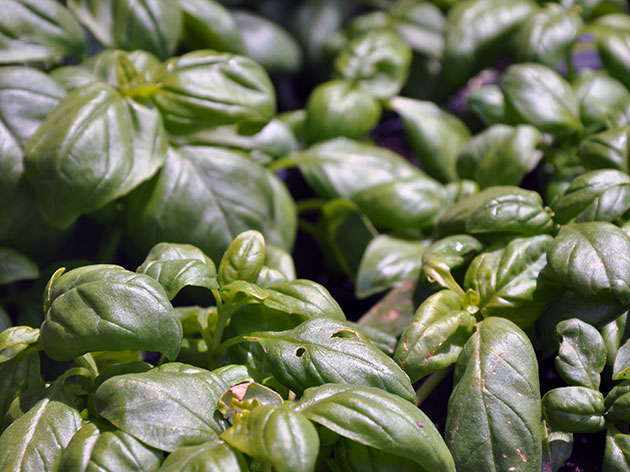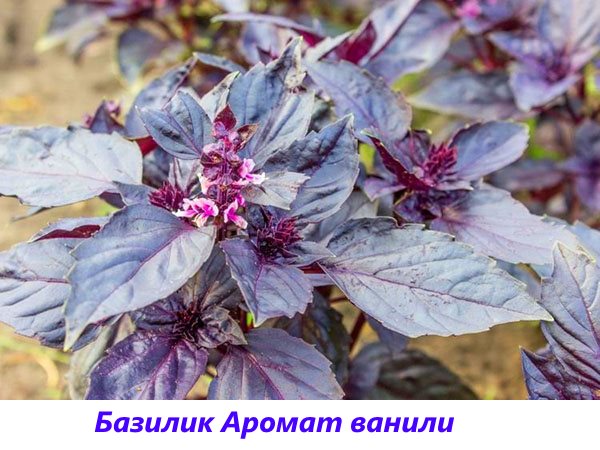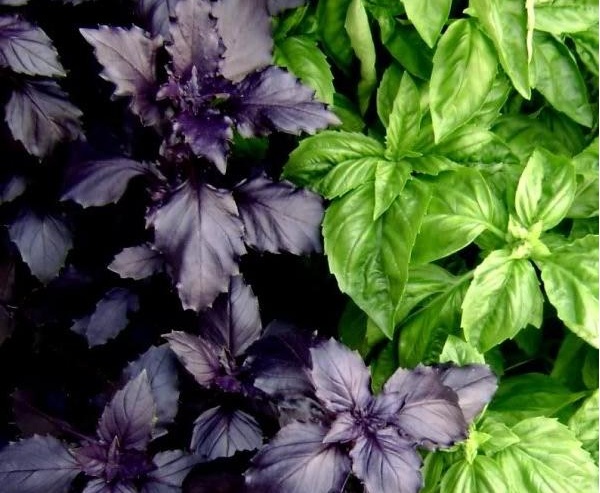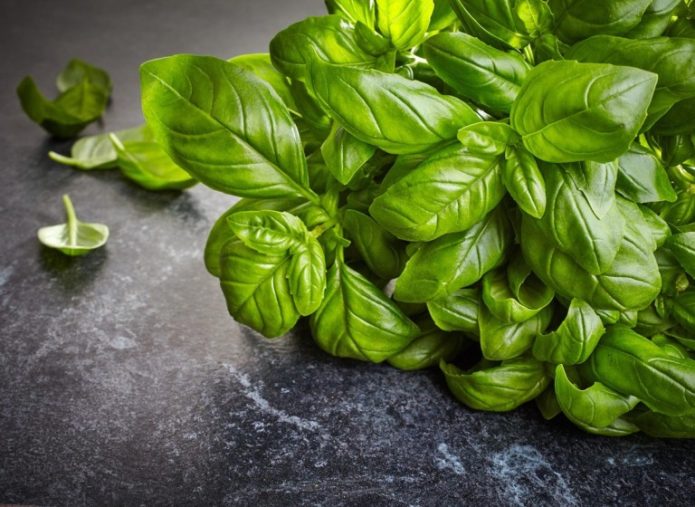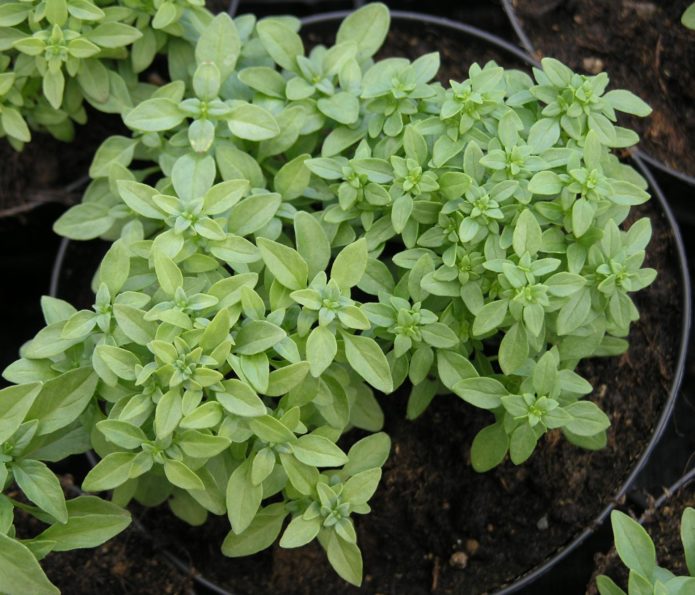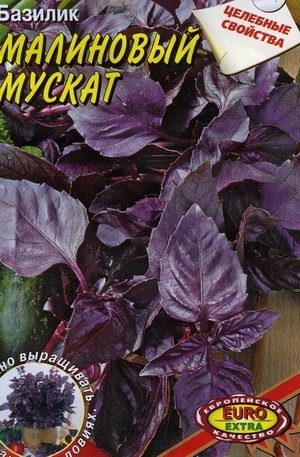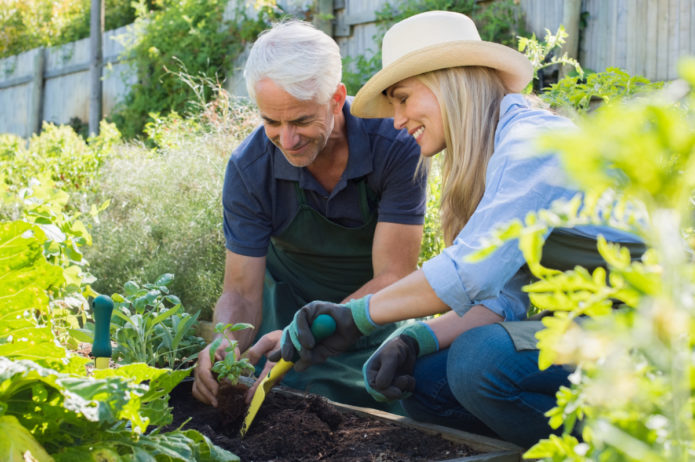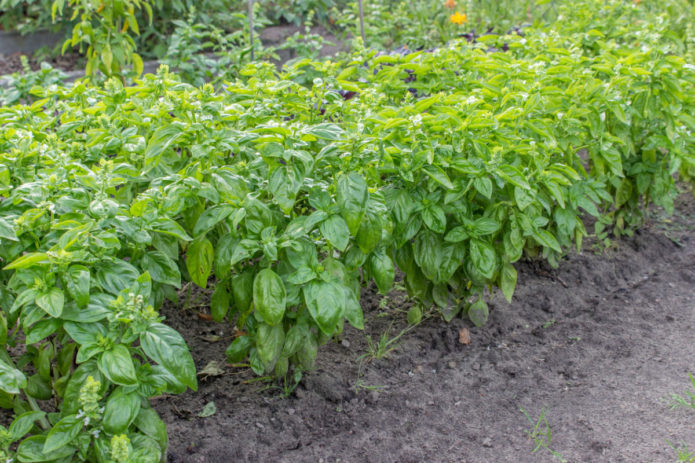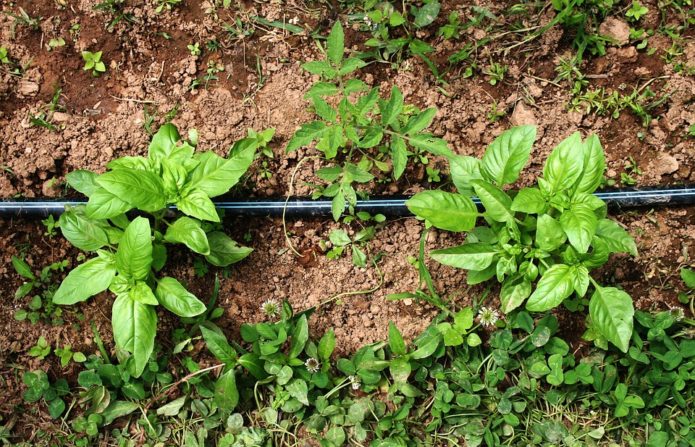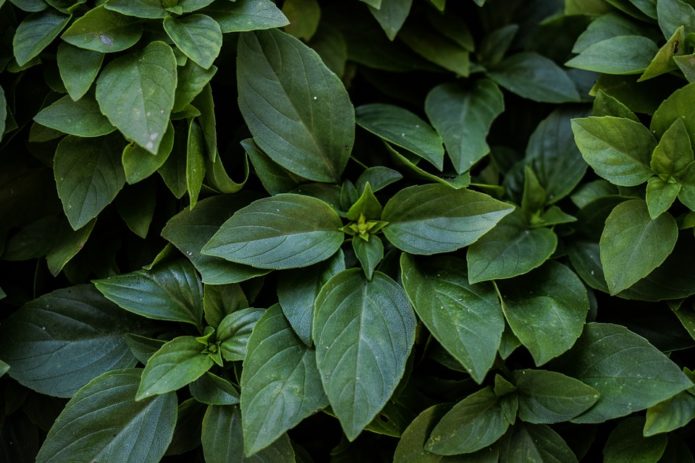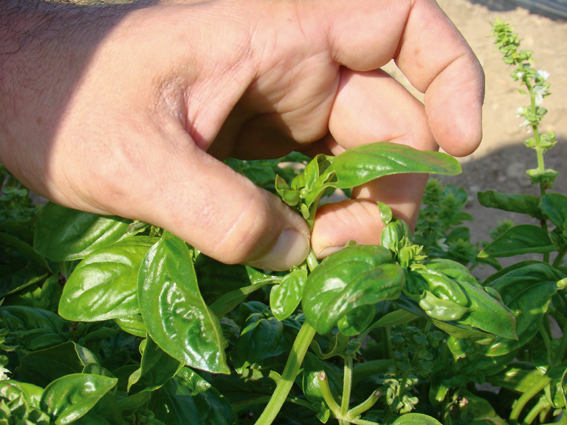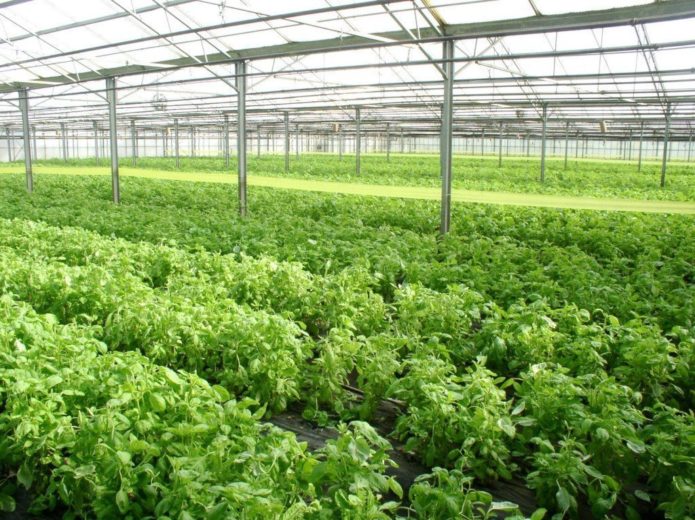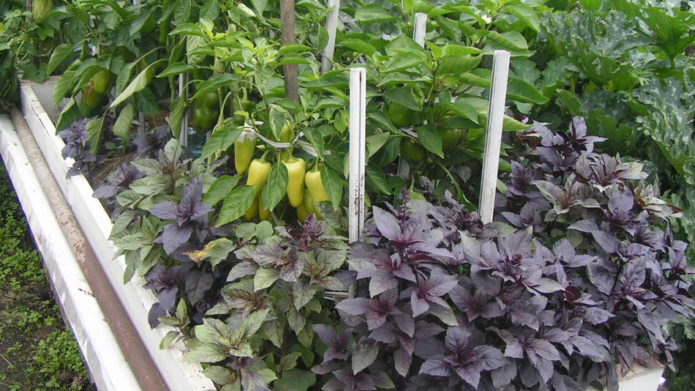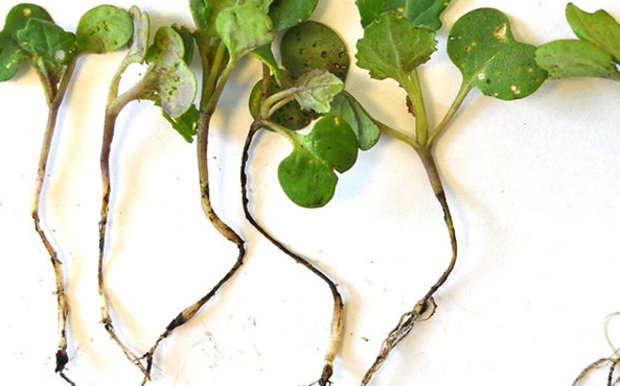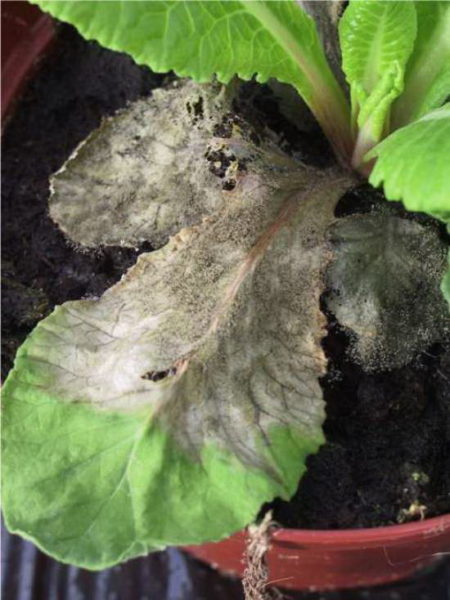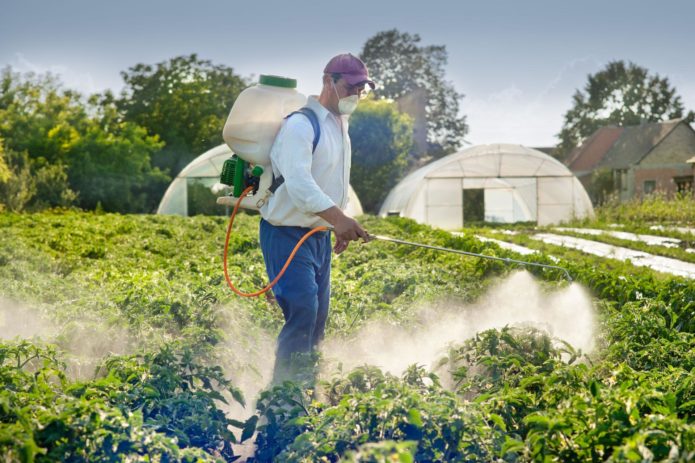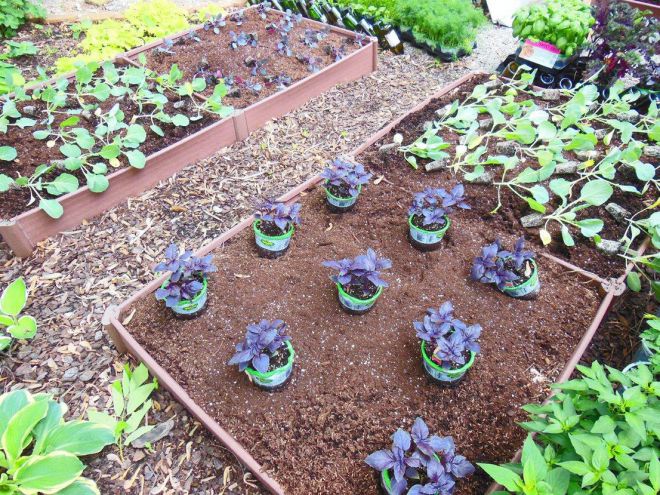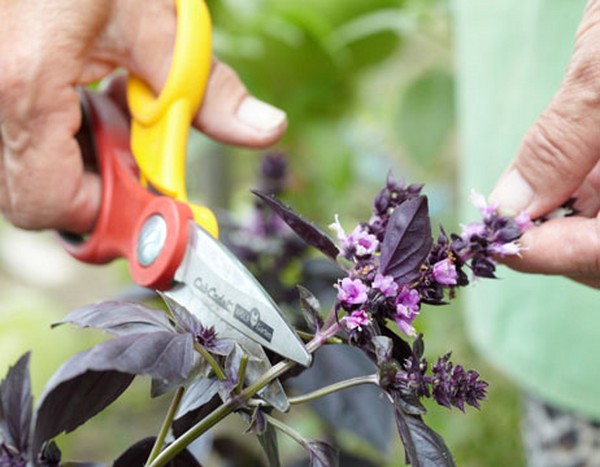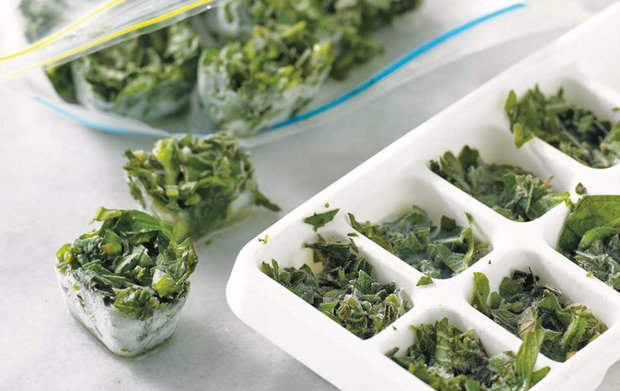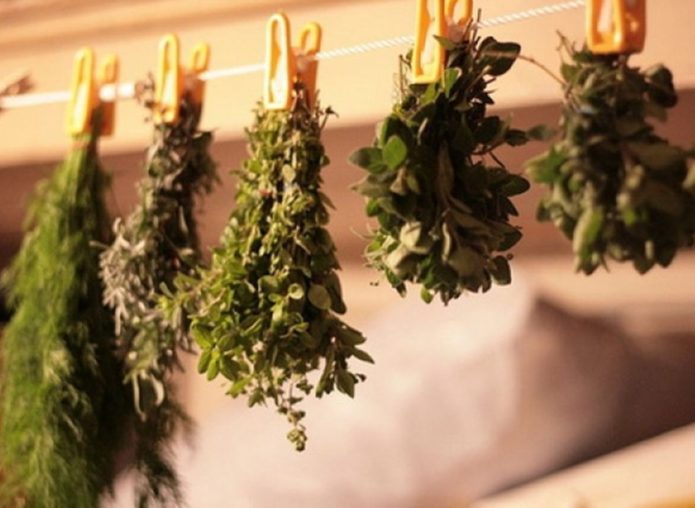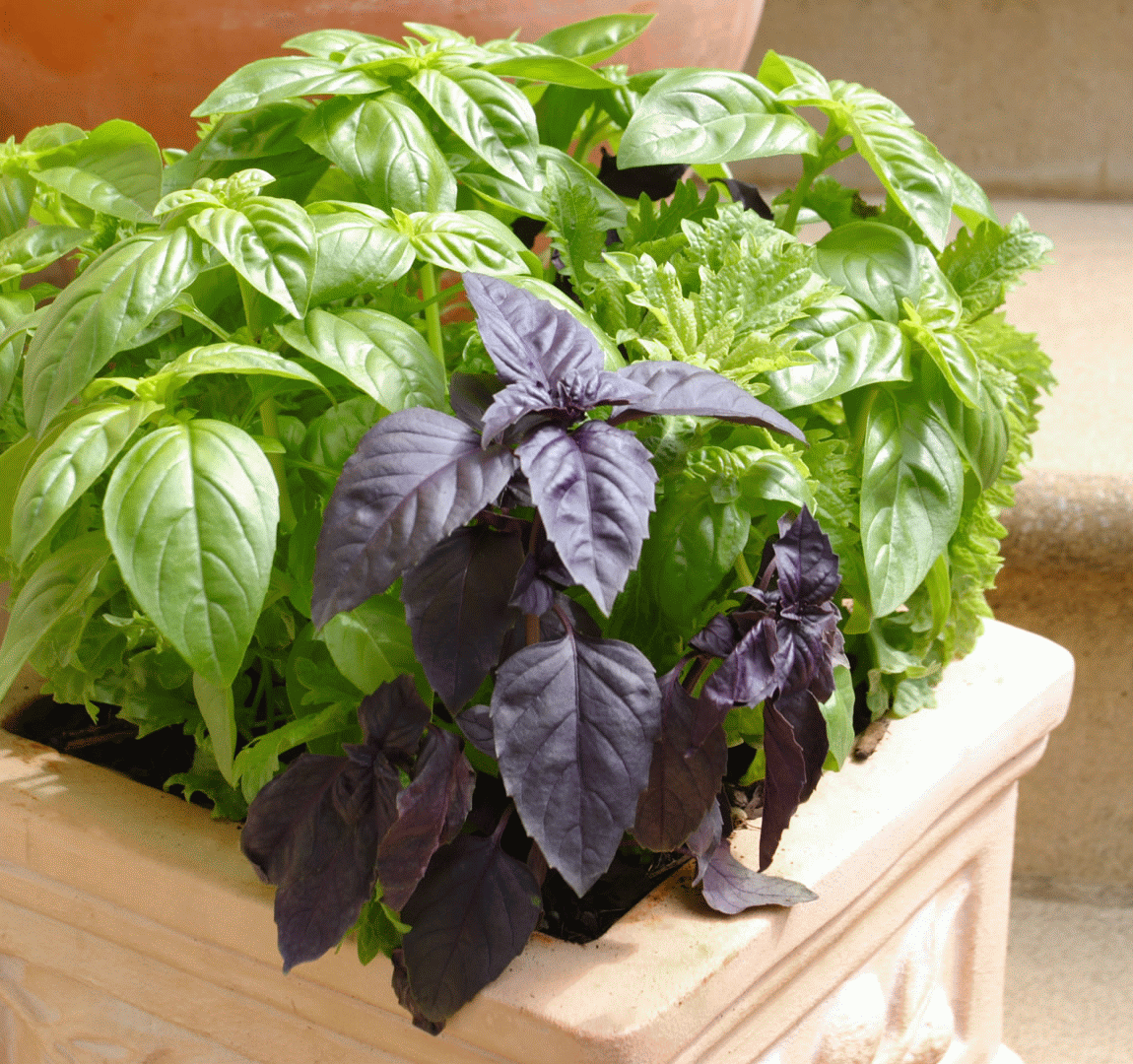People have known about the beneficial properties of basil and its ability to give food a unique taste for a long time. This spice is especially popular in the East. The population of Europe learned about the basilica thanks to the campaigns of Alexander the Great, but for some time they treated the unfamiliar plant with distrust. Hundreds of years have passed, and now in almost every private house or dacha there will certainly be a small flower bed with spicy herbs, among which basil takes pride of place.
Content
Basilica description
There are many ways to treat food. Someone cooks in a hurry, just to drown out the feeling of hunger, someone makes an effort to this, but in the absence of imagination, the dishes turn out to be ordinary, insipid. And after work, someone turns into a good fairy or sorceress in the kitchen, who can create a real miracle from a minimum food set. But dexterous hands alone will not be enough to prepare a masterpiece. Every fairy has a magic wand, and a real housewife in the kitchen always has a magic ingredient - a spicy herb. The palm tree among aromatic herbs belongs, of course, to basil.
Basil is translated from ancient Greek as "king, royal, royal". Its synonyms are: fragrant cornflowers, red cornflowers, darlings. In Azerbaijan, basil is called reagan, in Uzbekistan - rayhon, in Armenia it is known as rean. This variety of names indicates only one thing: basil is an incredibly popular herb in many countries of the world.
Africa is believed to be the homeland of this magical plant. Basil is found wild in India, China and Iran. Nowadays, this aromatic herb is successfully grown almost all over the world.
Sweet basil, or common, is an annual herb with a straight tetrahedral and well-leafy stem. Height from 50 to 70 cm. The bush looks lush due to the strong branching of the stem. The leaves are oblong-ovate, located on short petioles. The surface of the plate differs depending on the species - in some it is almost smooth, while others have a bubbly leaf surface. Basil can be of the most varied colors - pale green, deep purple or with a shade of red. The edges of the leaf plate are dotted with rare denticles.
The stem, leaves and bracts of many types of basil are covered with sparse hairs, which makes the plant look rough when touched with your hand.
The flowers are mostly white or pale pink, sometimes purple. Inflorescences are similar to tassels. The corolla is two-lipped in structure, which makes the basil a member of the Lamb family, or Lipocytes. Flowers appear in the axils of the upper leaves.
Blooming basil is an excellent honey plant.
Application and contraindications
Basil gained great popularity and fame precisely as a spice used in cooking. Leaves and stems are used both fresh and dried. Collect them before flowering. Basil has a unique aroma and taste that cannot be confused with anything. It is the variety of aromas that determines which dish is suitable for a particular type of basil. Plants that smell like caramel, lemon, cinnamon or vanilla are most often used for making desserts. Clove smell is good for meat dishes, aniseed - for fish dishes. Spicy herbs are an integral part of refreshing vegetable and fruit salads, pates, marinades, sauces, soups, preparations for the winter, tea drinks.
Add basil at the end of cooking to keep its unique flavor. But be careful!
But the use of basil is not limited to cooking alone. It turns out that the plant is very useful for health and, having appeared in Russia in the 18th century, at first it was used exclusively as a medicine. For a long time, the antiseptic and antibacterial effect of basil has been noticed. But it also has the following actions on the body:
- diaphoretic,
- antipyretic,
- astringent,
- strengthening the nerves,
- antispasmodic.
But due to the high content of essential oils, there are also contraindications. Basil is not suitable for people with coronary artery disease, stroke, and epilepsy. It is also necessary to limit its consumption in the following cases:
- diabetes,
- hypertension,
- thrombophlebitis,
- individual intolerance,
- age up to 7 years,
- pregnancy.
This plant is also widely used in cosmetology. Basil perfectly rejuvenates, regenerates and tones the skin of the face. It activates the hair follicles, so that the hair begins to grow faster and becomes shiny. Great for problem skin, as it is an antibacterial agent.
Types and varieties
In our time, more than 150 varieties of the scented plant have been classified. But the basis for the breeding work was the types of basil with green and purple leaves. A large varietal variety allows you to give different shades of taste to ready-made dishes, experiment with familiar products. Of course, each housewife chooses a spice based on her preferences. Therefore, you should know that each type and variety of basil has its own unique taste and aroma.
- Sandwich leaf. It smells like cloves. It is used as a flavoring additive to culinary dishes, fresh and dried. Used for conservation. Suitability for consumption occurs on the 47-51st day from the appearance of the first shoots. The plant is tall, upright, strongly leafy. The leaf blade is juicy green, rather large, ovoid. Has a scalloped edge and a smooth surface. The flowers are white. Plant weight 170-210 g.
- Anise aroma. The name speaks of its spicy aroma. It is used to add aroma to various ready-made dishes and sauces. Good both fresh and dried. It grows as a semi-spreading bush up to 60 cm high. It is well leafy.The leaf blade is slightly bubbly, green. Plant weight 185–250 g.
- Lemon miracle. It is able to enrich the dish with lemon-mint notes, therefore it is often used in home cooking and in preservation as a flavoring additive. Plant of medium height, intermediate. Average leafiness. An elliptical green leaf is of medium size. The surface of the plate is slightly bubbly, the edges are finely toothed. The flowers are pink. Plant weight 300–320 g. The period from full germination to the beginning of the economic shelf life is 45–53 days.
- Vanilla aroma. The vanilla-scented herb is used as an aromatic additive in home cooking. Also suitable for canned products. The leaves of the plant can be eaten on the 50-60th day after full germination. The bush is undersized, upright, of medium density. The leaves are ovoid and have a finely toothed edge. The surface of the plate is slightly bubbly, concave. There is practically no gloss. It blooms in purple.
- Russian hero. Has a spicy clove-peppery aroma. It is used as a flavoring additive in the process of canning and cooking. It is used fresh and dried. Suitable for use in 48-50 days after germination. The bush is erect, high. The leaf is large, ovoid, green in color. The surface of the plate is medium blistering. During the flowering period, it throws out white inflorescences. Plant weight 170-210 g.
- Purple glitter. The aroma is camphor-clove. Good fresh and dried in home cooking and when preserved as a flavoring additive. The medium-sized shrub grows straight and has a strong leafiness. The leaf is ovoid, dark purple, medium in size. The surface of the plate is smooth, the edge is finely toothed. The flowers are pink. Suitable for food 30–35 days after germination. The plant is quite weighty, its weight reaches 470 g.
- Malachite. Has a pleasant caramel-mint smell. Used in home cooking and canning. The bush is high. Growing upright, slightly loose. Average leafiness. The dark green leaf is of medium size and elliptical in shape. The surface of the plate is slightly bubbly, the edge is finely toothed. The color of the flowers is pink. Ready for use 40–53 days after germination. Plant weight 300-320 g.
- Favorite. Nice taste and aroma of caramel. Belongs to mid-season varieties, economic suitability occurs in 50–55 days from the beginning of germination. The mass of one plant is 400–450 g. It is used as a flavoring agent and a spice-flavoring additive in canning and in cooking. Fresh is good as salad greens. The tall, upright bush has a medium leafiness. Leaves are light green, elliptical. The flowers are pink.
- Raspberry nutmeg. Has a bright nutmeg taste and aroma. It is able to add spicy notes and enhance the aroma of ready-made dishes and sauces. Used fresh or dried. Medium, intermediate and loose bush. The medium-sized leaf has an anthocyanin coloration. The flowers are dark purple. You can use it as directed 45–48 days after full germination. The bush weighs on average 180-200 g.
Reproduction methods
Whether you grow basil outdoors, in a greenhouse or at home on a windowsill, there are only 2 ways to propagate this plant.
- Seminal. This method is uncomplicated, although it requires little seed preparation.They are soaked in a stimulant solution, such as Epin, for 8 or 10 hours. Then it is dried by spreading it out on the fabric. Dry seeds are sown in open ground, covered with plastic wrap. With timely watering, the first shoots will appear in 1.5–2 weeks.
- Cuttings. If you already have an adult basil bush, then you can use the fastest and most convenient method. To do this, cut off a few shoots or the top of the plant and place the cuttings in a container of water. The roots will appear very quickly - after 1, maximum 2 weeks.
Outdoor Basil Care
Basil seedlings are planted in open ground not earlier than the second half of May, when the threat of return frosts has passed, and the daytime temperature is stably above 20 aboutC. But in each region this period should be chosen individually - in cooler areas, planting begins in early June. In the southern regions, you can not only plant seedlings, but also sow seeds directly into open ground.
Legumes, pumpkins, and nightshades are good precursors to basil.
Growing conditions
Basil is thermophilic, so for its successful cultivation, you need to choose the most illuminated area, protected from strong winds and drafts.
Experienced gardeners often plant the herb under young trees. They are not yet able to give much shade and do not interfere with the basil's enjoyment of the sun's rays. In turn, the strong-smelling bush drives away harmful insects from the seedlings. This is such a natural mutual assistance.
Basil loves light soil rich in humus, the main advantage of which is good water permeability. The site should be prepared one month before planting. It is cleaned of vegetation residues, stones and dug up with organic matter - humus, compost or peat. On light loams, it will be enough to add 2 kg of organic matter per 1 m2... The landing itself is best done on a cloudy day or in the evening.
Watering frequency
Delicate aromatic plant is very moisture-loving. Sufficient watering helps the basil actively grow young leaves. But watering should be done only after the soil has dried out. Excess moisture, like its lack, negatively affects the development of the plant. Therefore, natural precipitation or high air temperature significantly adjust the frequency of irrigation in one direction or another.
Don't pour cold water on the basil. Before moistening, the liquid must be defended for at least a day in a large container. During this time, the water will have time to warm up properly.
To allow the liquid to heat up enough, place the container for settling water in an open, sunny place.
Top dressing
To stimulate the growth of the leaf mass, you should feed the basil at least 1 time per month. Fertilizers can be organic or mineral. But it is preferable to carry out mixed feeding.
Table: types of dressings for basil
| Type of feeding | Application rates |
| Nitrophoska | 2 tbsp. l. for 12 liters of water. Consumption 3-4 liters per 1 m2. |
| Ammonium nitrate | 15–20 g per 10 liters of water. |
| Manure | The concentrated solution is diluted with water in a ratio of 1:10. 1 m2 a liter of working solution is enough. |
| Chicken droppings | More water is added to the working solution from this type of organic matter - 1:20. |
If nutrients were introduced into the soil before planting, the first top dressing is carried out 10–12 days after planting.
Trimming and shaping
A special feature of the basil is its excellent branching ability. To achieve the maximum splendor of the bush, you need to remove the appeared peduncles in adult plants in time. Pinch young basil over 5-6 leaves.This procedure activates the growth of lateral shoots, and the spicy bush grows in breadth, rather than stretching in height.
By pruning fresh herbs periodically, you help the basil keep its foliage juicy throughout the season. If the inflorescences are not removed, then the leaves begin to taste bitter, and the lower ones quickly turn yellow and dry.
Growing basil in a greenhouse
The greenhouse reliably protects plants from frost. The microclimate without sharp fluctuations in temperature at different times of the day and with a constant level of humidity allows you to get greens much earlier than in the open field.
Growing features
Growing basil in greenhouse conditions is quite simple and profitable. Indoor spaces have many advantages, including:
- getting early greens,
- reliable protection from bad weather,
- minimal damage from pests and diseases.
The greenhouse makes it possible to grow a vitamin product not only during the season, but all year round. True, for this you need to have a heated room to maintain the air temperature at 22-28 aboutC. So that plants do not suffer from a lack of lighting, preference should be given to durable and transparent materials, for example, glass or polycarbonate, and inside it is necessary to have additional lighting. Another requirement for greenhouses is the presence of vents for ventilation.
How to grow basil in a greenhouse
In a greenhouse, basil can be grown quite successfully by seed or seedlings. In one case or another, the landing is carried out earlier than in the open field. Seeds are sown in early March or April. During this period, the spring sun has time to warm up the greenhouse. Seedlings in the southern regions can be planted in mid or late March. In places with cooler climates, you need to wait a little with this job.
Seed planting
Seeds are planted in well-moistened soil to a depth of no more than 1 cm. The crops are covered with plastic wrap. The first shoots usually appear after 10 days. When all the seeds sprout together, be sure to thin out. The distance between bushes in a row should be 20–25 cm, depending on the growth rates of the planted variety. Leave at least 30 cm in the row spacing.
Video: how to plant basil seeds
https://youtube.com/watch?v=3T0Uq2Snqyk
Planting seedlings
Seedlings are grown in special containers. The seeds go half a centimeter deep into the moistened soil, the distance between them is 3 cm. For the seedlings to sprout successfully, the container is covered with glass or plastic wrap. Such a shelter will help maintain a temperature of 25 aboutC. If the seedlings are weak, then after the appearance of the first true leaflet, they need to be fed with a nutrient solution. To do this, mix phosphorus, potash and nitrogen fertilizers in a ratio of 5: 3: 2 with 10 liters of water. A pick is carried out when 2 leaves have appeared on the seedlings. Seedlings are transplanted into the ground when the plants have at least 4–5 leaves.
Soil requirements
As a rule, for spring planting, the greenhouse begins to be prepared in the fall. A layer of earth up to 25 cm thick is removed and the vacated areas are filled with a mixture of garden soil with humus or peat, with the addition of sand to make it friable. You can go the other way - just dig up the soil, having previously evenly scattered fertilizer over the surface. For every m2 it is necessary to add from 3 to 5 kg of organic matter, 25 g of superphosphate and 15 g of potassium salt.
If for some reason you could not prepare the land in the fall, do it no later than 2 weeks before the start of work.
Watering
The irrigation schedule for growing basil in a greenhouse does not undergo dramatic changes due to stable indoor conditions. Water more often and generously in the first month after planting.Then reduce the frequency of humidification so that excess moisture does not lead to disease. Water a mature plant when the topsoil is dry enough.
As a rule, watering the basil once a week is sufficient in the greenhouse. But if the conditions of the microclimate inside change, then the humidification schedule will also change.
Watering should be done with warm water. For the procedure, you will need a watering can with a nozzle in the form of a wide spray. Drip irrigation has also proven itself well.
To maintain normal humidity inside, it is necessary to carry out periodic ventilation. The accumulating condensation on the glass must be removed. When airing, the time of which correlates with the weather conditions, try not to create drafts.

Basil is demanding on moisture, but in the greenhouse you need to strictly control the level of moisture
Top dressing and pruning
These procedures are carried out in the same way as for growing basil outdoors.
Video: growing basil in a greenhouse
Growing at home
If you love basil and want to have these fragrant greens on your table every day, try growing them at home. The lesson is fun and easy. But there is one little secret. Low-growing varieties of basil have proven themselves well as a pot plant. There is a long list of them, but still we will offer some of them:
- Dwarf,
- Basilisk,
- Troll,
- Marquis,
- Philosopher,
- Compatto.
Growing basil as a houseplant was a popular activity in ancient Rome. They believed that the aromatic herb brings love, happiness and good luck. By the way, in the Mediterranean countries they still believe in it. Therefore, almost every balcony there is decorated with this spicy plant.
At home, basil is grown in the same ways - by seeds and seedlings. But first you need to choose the right soil mixture - it should be light and permeable. Be sure to place the drainage at the bottom of the pot, as stagnant water in the roots will lead to the death of the plant. And of course, observe the thermal regime. Basil grows well in a warm sunny window, away from drafts.
Basil compatibility with other plants
As you know, in the cramped conditions of small gardens, many summer residents resort to tricks - compatible or compacted plantings. The same method is often used in greenhouses. So that plants do not oppress each other, but, on the contrary, help develop, you need to choose the right neighbors. Basil in this regard is a convenient plant. It grows well surrounded by many vegetable crops.
- For legumes, basil is not only a great neighbor, but also a protector. Its bright aroma repels the bean weevil.
- It improves the taste of leafy and head salads, tomatoes.
- Goes well with kohlrabi, pepper, corn, zucchini, asparagus.
But there are vegetables and strong-smelling plants with which the basil does not add up. They oppress each other, so it is not recommended to plant basil next to the following crops:
- cucumbers,
- cabbage,
- radish,
- marigolds,
- marjoram,
- rosemary.
Diseases
Despite the apparent tenderness and fragility, basil is quite disease resistant. But the onset of diseases is possible with a combination of adverse factors, namely:
- high humidity,
- decrease or increase in temperature,
- thickening of plantings,
- incorrect watering regime.
The most dangerous diseases for basil are fungal diseases:
- Blackleg. Most often, young seedlings suffer from the disease. Fungi, penetrating into the root collar, clog the vessels through which food enters. In a diseased plant, the stem becomes thin and blackens, then the leaves turn yellow, and the basil dies. The cause of the disease lies in the excessively moist soil, in which the roots do not receive enough oxygen. Another reason may be the increased acidity of the soil.
- Fusarium. Both seedlings and adult plants suffer. Fungal spores infect blood vessels. Toxins enter the nutritious juices, which spread throughout the plant, as a result of which the basil withers and dies. The disease can be recognized by a number of signs. In a young plant, the stem becomes thinner and turns brown. In an adult, the apical shoots first dry out, and then the whole plant withers. The development of the disease is facilitated by an increase in temperatures, as well as high air and soil humidity.
- Gray rot. Greenhouse plants often suffer from it. The disease manifests itself on the lower dying leaves, then passes to the stem. The affected area initially appears as dry, light brown spots. Then they become watery and covered with a light fluff. The cause of fungi is plant residues and condensation accumulated on them.
Treatment
If the disease has just manifested itself, spraying with onion husk infusion will help to cope with the spread of the fungus: 1 part of the crushed husk is poured with 4 parts of boiling water. It is infused for a day in a warm place and filtered. You can use copper sulfate - 1 tsp. for 2 liters of water.
If the fungus has spread to most plants, then you cannot do without the use of fungicides. Chemicals are used for processing, for example:
- Topaz,
- Fundazol,
- Fitosporin.
Each package contains instructions and must be strictly followed.
Prevention
As you know, prevention is the best way to fight any disease. In order not to once again resort to chemistry, you will have to perform a number of activities.
- Avoid thickening plantings.
- Dust the ground with ashes from deciduous trees every 5–7 days.
- Weed and loosen the soil frequently in the basil beds and between the rows.
- Regulate watering. In some cases, it is better not to top up than overflow.
- Be sure to ventilate greenhouses and get rid of condensation.
- Remove the diseased plant together with a lump of earth, and spill the hole with a weak solution of potassium permanganate.
- Try not to grow basil in one place for more than two years in a row.
Pests
Basil is also resistant to pests. The strong scent can scare off most of them. As a rule, mass destruction of plantings by harmful insects is not observed. But young and weakened plants can suffer from aphids or meadow (field) bugs. Sucking pests feed on the cell sap of plants, which leads to a slowdown in their growth, and then to the drying of the leaves.
Compliance with the preventive measures described above will help prevent uninvited guests. Well, if they appear, folk remedies will help to cope at an early stage. Pests are scared away by herbal decoctions:
- tansy,
- wormwood,
- bitter pepper
- Luke,
- dandelion,
- garlic.
Processing is carried out several times at weekly intervals. An ash solution will do a great job - pour 300 g of ash with boiling water, simmer for half an hour over low heat, cool and strain. Dilute the resulting volume with water to 10 liters.
If you cannot do without chemicals, then use Karbofos, Actellik or Akarin.
Growing problems
Although basil is not a finicky plant, it can sometimes have problems growing it. Most often this can happen at home or when grown in a greenhouse.
Table: problems encountered and how to fix them
| Problem | Cause | Elimination |
| Basil is pulled up |
|
|
| Leaves are drying | The plant suffers from high air temperatures and low humidity. |
|
| Leaves curl |
|
|
| On the leaves appear light, parchment-like spots | Perhaps it's a sunburn. |
|
| Grows poorly |
|
|
| Basil blooms | This is a natural process. |
|
Growing secrets
If you first decide to grow this useful plant in the garden, first carefully study all the secrets for its successful cultivation:
- For the basilica, choose the sunniest place. It is not bad if the bed is protected from the north by dense plantings of other plants.
- In southern regions, sow seeds or plant seedlings only in well-heated soil. If you live in cold climates, you need to grow basil either in greenhouses or in a room on a windowsill.
- Break or cut off the resulting inflorescences in time. This stimulates the branching and growth of delicate vitamin greens.
- Basil loves a clean garden, so weeding and loosening should be done at least 7 times during the growing season.
- If you plant basil with peppers or tomatoes, then take care of the spicy herb much easier. When caring for vegetables, you pay attention to the basil at the same time.
Collection and storage of the basil
To use basil as a flavoring additive to food, you can pick off the leaves or the top of the shoot when the plant is 15 cm tall. Do this carefully so as not to accidentally pull out the entire bush.
By the time of the beginning of flowering, and this is approximately the end of July-beginning of August, the leaves have already accumulated a sufficient amount of essential oils. It is during this period that it is necessary to collect sheet mass for harvesting for future use. You can save vitamin greens in different ways:
- to freeze,
- salt,
- preserve.
But the most common way of storing vitamin herbs is drying. It is very simple to prepare basil in this way:
- Pluck or cut off the plant's shoots.
- Collect 5-6 twigs in small bunches.
- Hang upside down in a well-ventilated dark area.
- After a few weeks, the leaves will naturally lose moisture.
- Store the finished product in a glass jar with a tight lid.
Basil can also be dried in the microwave, electric dryer and oven.
Basilica reviews
I love basil in any form, I sow quite a lot, several times. I sow the first sowing in the middle of a cucumber patch, under a film, while cucumbers rise and begin to shade it, it is usually eaten. The subsequent seeding is already in the exhaust gas. Varieties are different, not very good. I like aniseed, the rest are all good, enough for fresh consumption and for drying for the winter.
And I plant purple basil interspersed with green, seeds from Azerbaijan, for me this is the classic taste of basil. I cut and dry the leaves for the winter, and the flowers also dry, they help from coughing. This year I sowed lemon.
I used to sow only purple, I like to use its leaves when marinating kebabs and in pea soup. Now I wanted to diversify the seasonings with different tastes.
Basil is cut very quickly and well. There are vegetative varieties, I lead them through cuttings. I remove the flowers.
Basil is my favorite seasoning. I grow it on a balcony that is not glazed. They say that basil is a thermophilic plant, but ... even in our cold climate, given that last year's summer we passed almost 2.5 months in jackets, it grows well. I sow it somewhere on May 20 and cover it with glass or film. The sun begins to bake and friendly shoots appear. From time to time I take off the shelter and ventilate it, after June 12 I remove it completely. And it just grows, the tops go for cutting and I just pluck the leaves. I even manage to dry about 1 liter for the winter. Shoyu different and green and purple.
Growing healthy basil has now become fashionable. Spice is not only consumed in food, but also made from it medicinal drugs and used in cosmetology. And also used as a decoration of the site. After all, well-groomed basil is beautiful in appearance, it smells good and scares away mosquitoes. Therefore, on the balcony or terrace where this fragrant plant grows, you can enjoy the fresh air until the morning, without being distracted by annoying insects.
